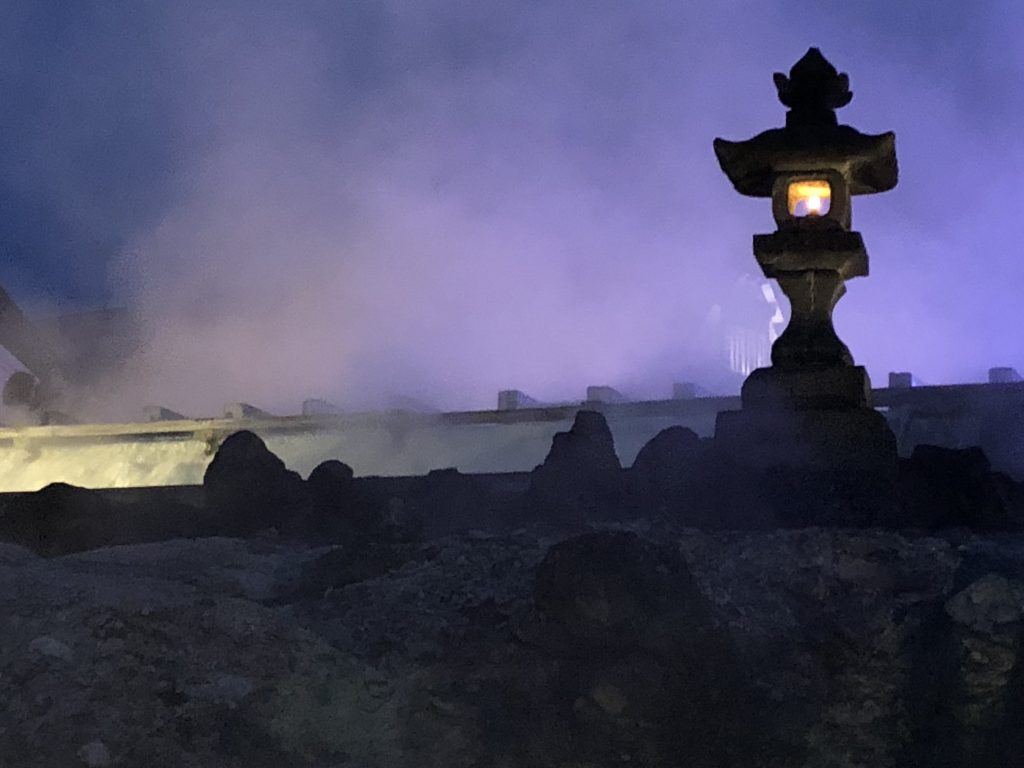
When it comes to vacation, I’m very much the kind of person who likes to run everywhere, see everything, and taste every dish that comes my way. That breakneck speed can get exhausting, though, and there’s something to be said about some hardcore relaxation.
When it comes to
If you’re from a country where communal bathing isn’t common, then that last point may take this from a relaxing outing to absolute nightmare material. I was nervous myself the first time I went to an onsen. That said, it’s amazing how quickly you get used to doing something when everyone around you treats it like it’s nothing. You might get a second look or two if you’re very clearly western, but no one’s going to be staring at your body while you’re trying to bathe. (That said, you might have to field some questions from extremely friendly grandmas.)
There are several specific rules for onsen, but they’re pretty easy to remember. Clean your body with soap at the provided showers before you get in the communal bath, don’t let long hair get in the water, take your tiny towel with you (but don’t put it in the water!) and leave your big towel in the dressing room, don’t splash or shout while in the water, make sure you go to the bathing room assigned to your gender… basically, just follow those around you. There are usually signs that explain what to do, and people are usually pretty patient with confused tourists.
Onsen are common all over Japan, and the onsen town takes that a step further. Onsen towns are entire towns that are devoted to the art of bathing. It could be a place where there’s a huge amount of natural hot springs, or it could be a place where those springs are reputed to have particular healing properties. Or, like Kusatsu Onsen, it could be both.
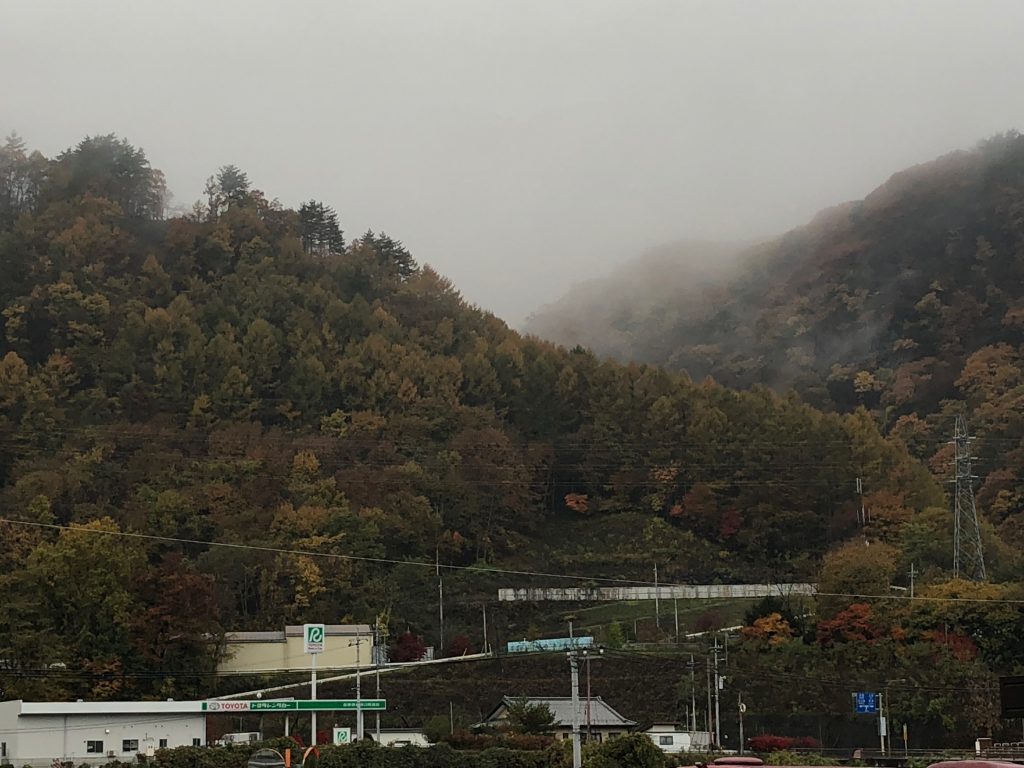
Kusatsu Onsen is one of the most famous onsen towns in Japan. A mind-boggling 32,000 liters of hot water bubbles up out of the earth every single minute and its high mineral content is supposed to be incredible for your health — though, admittedly, it does leave the entire town smelling a little like rotten eggs. There are several public baths that are open to tourists (as well as some that are reserved for residents) and a bustling little town has cropped up around them.
The main feature of Kusatsu Onsen is the
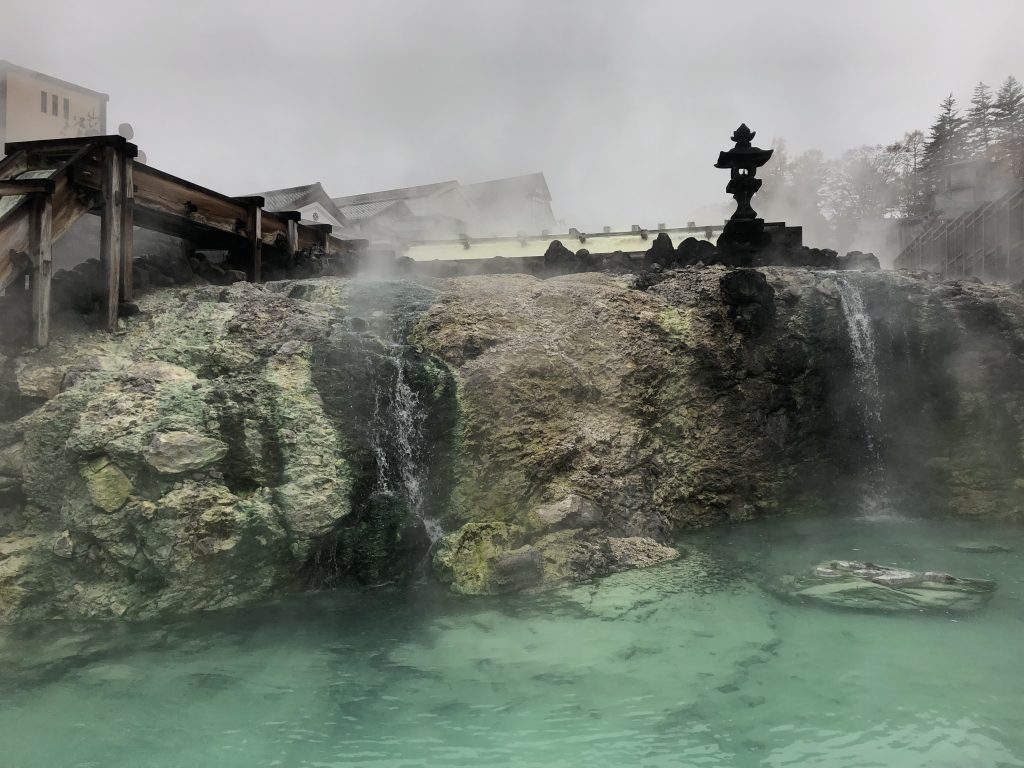
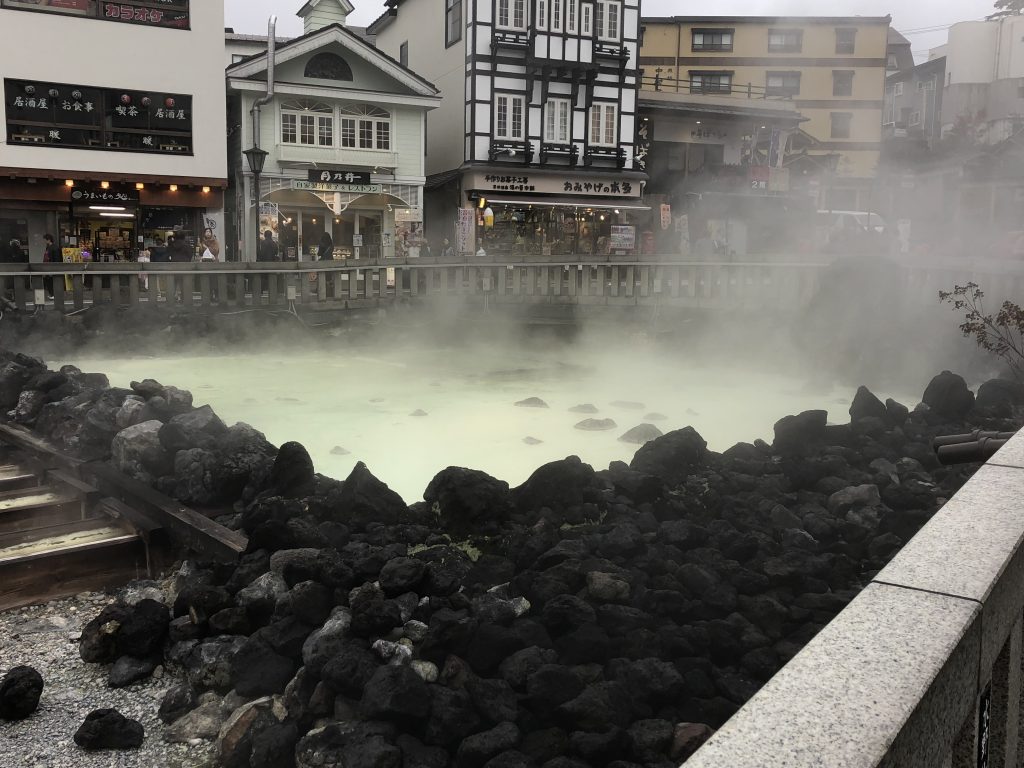
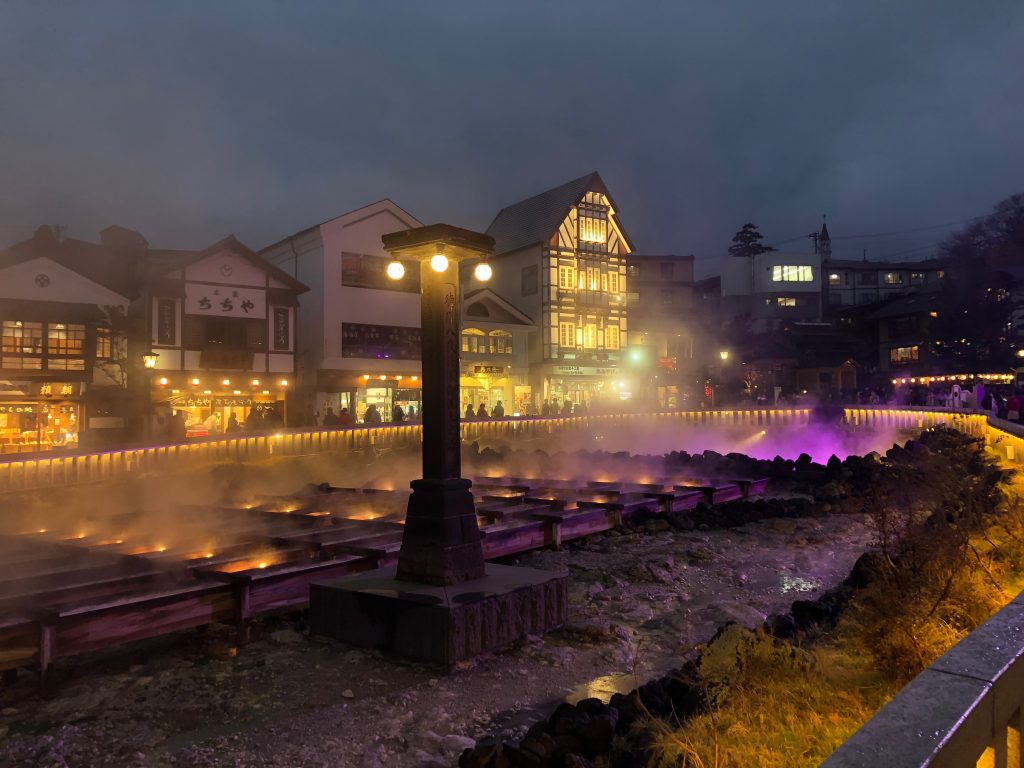
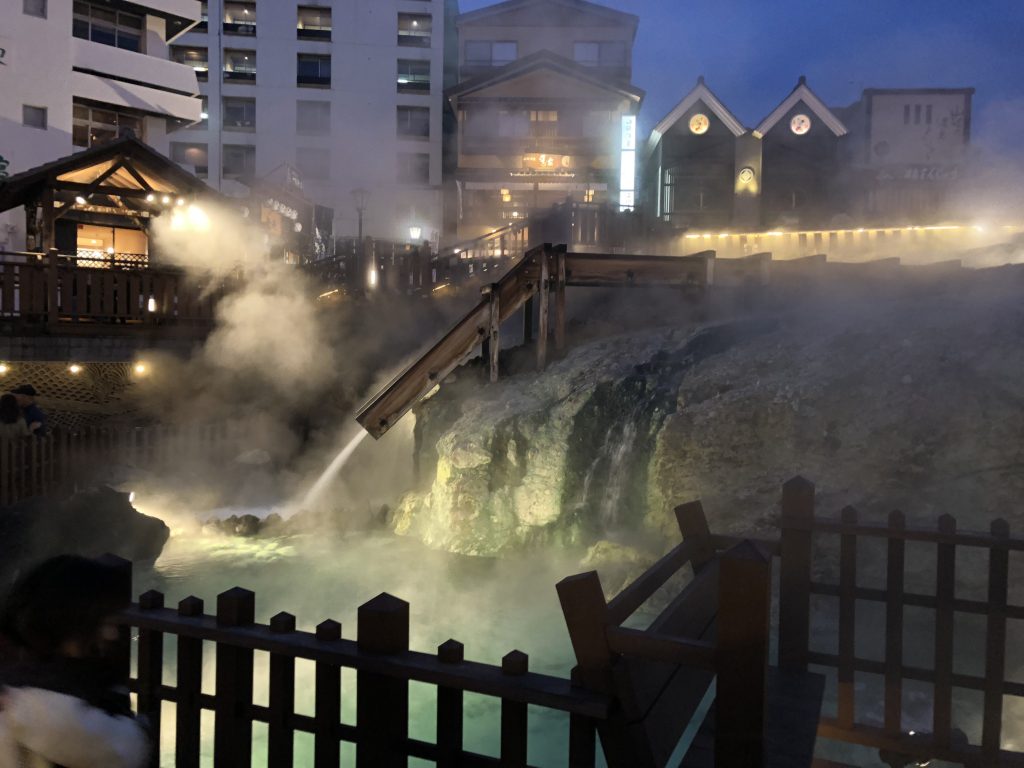
Another way that Kusatsu cools off its water is via yumomi, a special dance performed in a little theater next to the yubatake. Women wielding enormous paddles perform an elaborate dance and sing songs while agitating the spring water to cool it, and audience members are often encouraged to pick up a paddle and help them out. It’s a really cool experience, but also a very popular one; you’ll probably want to show up early if you want a good spot. Don’t make the same mistake I did, of accidentally standing in front of an elderly woman. People are super here for this show, and like I did, you might get forcefully moved aside.
(Please learn from my mistake: don’t mess with elderly women in Japan.)
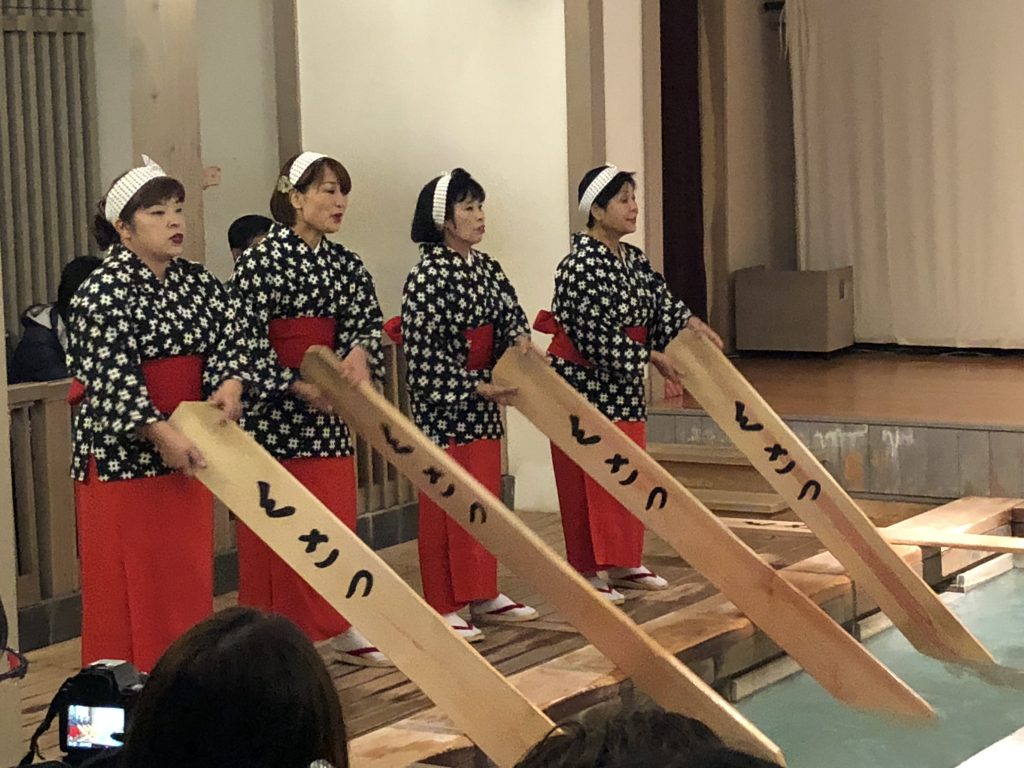
(Note: the paddles say “Kusatsu”.)
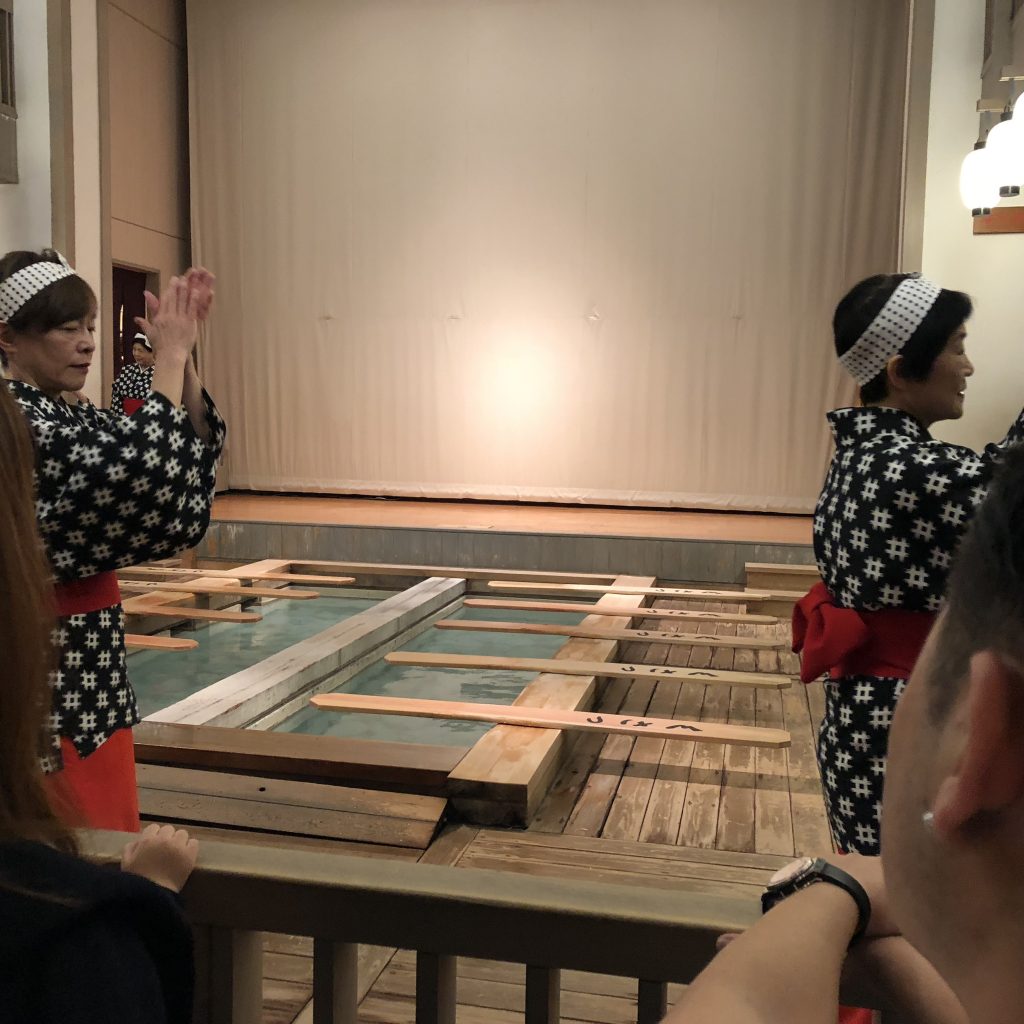
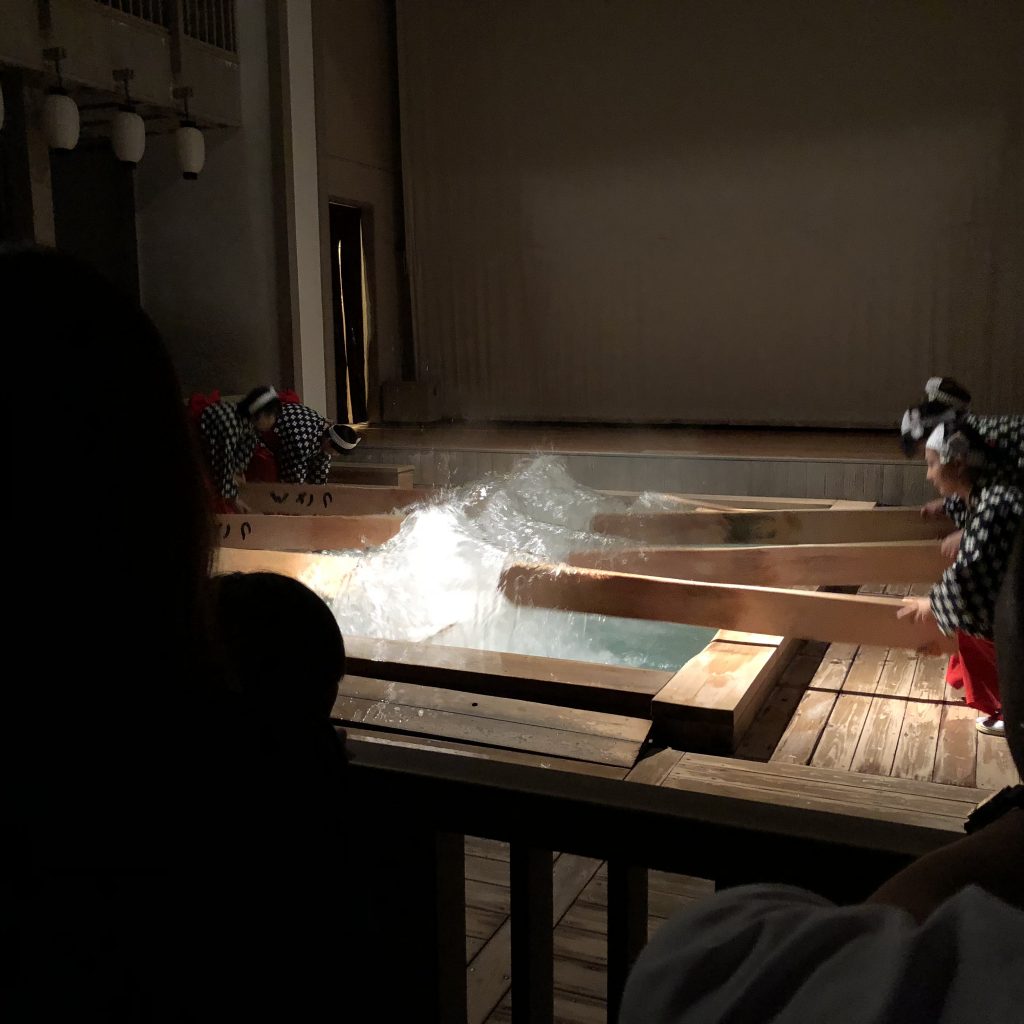
Once you’ve walked through the picturesque old town and seen the water cool down, it’s time to try it out for yourself. There are several bathhouses to choose from throughout the town, and you can find guides there to help you choose which one you’d like to try first. You could try Otaki-no-yu, a large, fancy bathhouse that’s known for its pools that get increasingly hotter. I had more than one person ask me if I’d made it to the last one! There’s also Goza-no-yu, which has an elegant wooden interior and a community feeling inside. (This one was my favorite.) Or you could try something totally different and attempt the timed baths at Jizo-no-
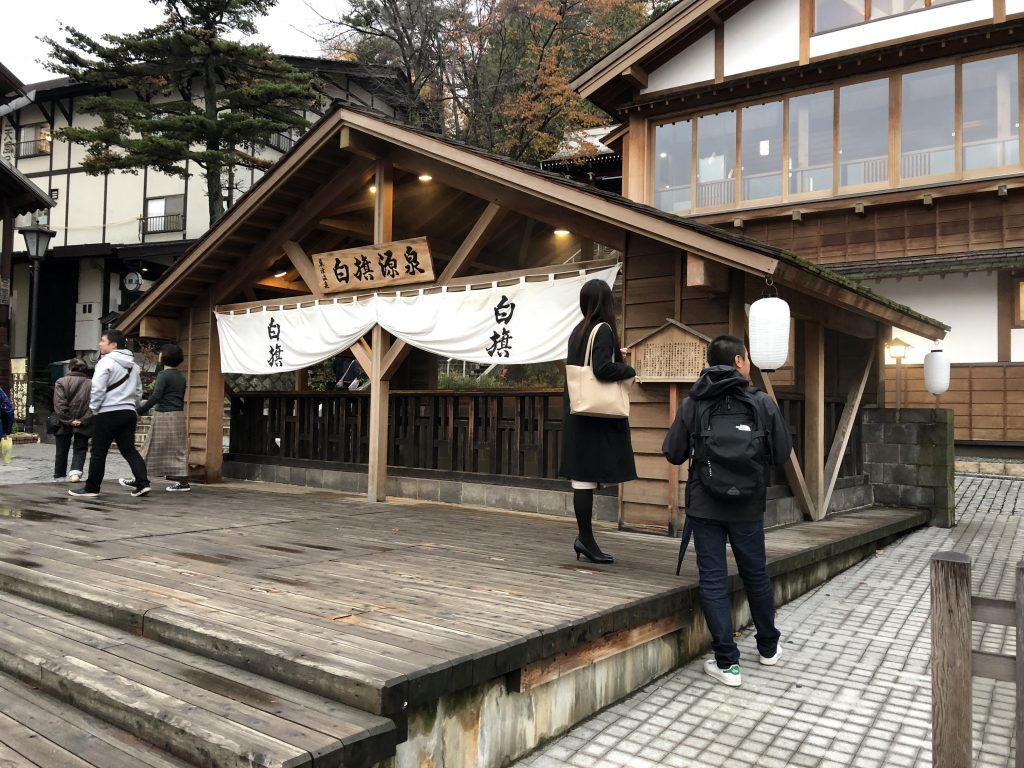
After you’ve had a nice bath (or two, or three) it’s time for a snack. There are certain foods that are famous in onsen towns, and I was happy to try them out for myself. As you walk down the main street to the
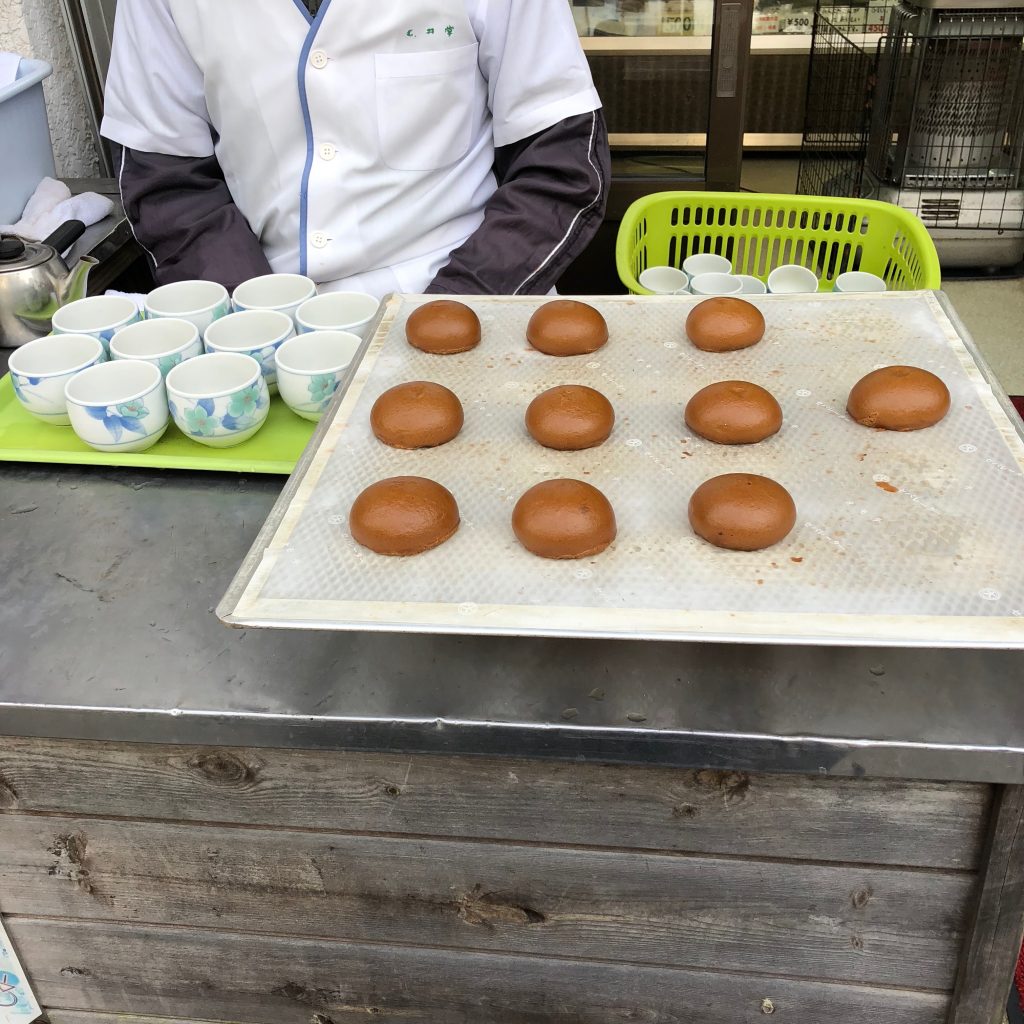
I fell prey to these friendly hawkers my first time down the street, but I could hardly complain about the experience. A little brown
I had no intention of buying a commemorative box of
The other food onsen towns all seem to be known for is onsen tamago, or onsen eggs. These are soft-boiled eggs that are cooked directly in the hot spring water that the towns are known for. Eggs are often just put in baskets and left in a small hot spring to cook. Once you buy them, you’re given a little bowl and a packet of broth you can pour over your egg once you get it out of its shell. It’s a little awkward to get the hang of, but it’s truly delicious.
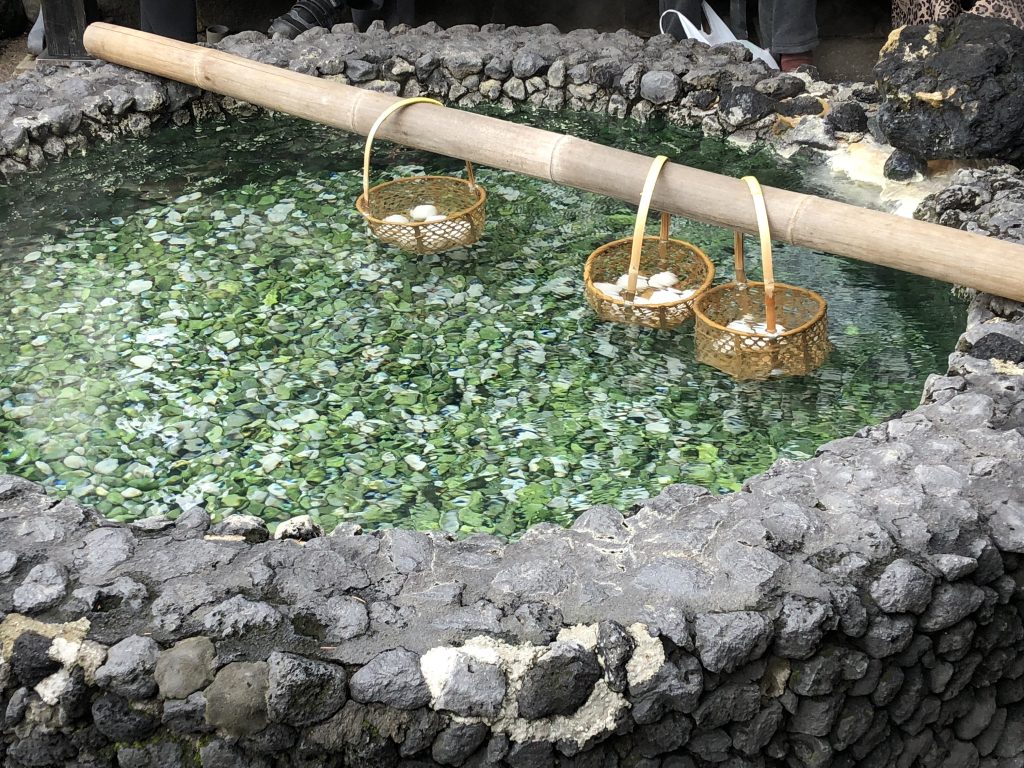
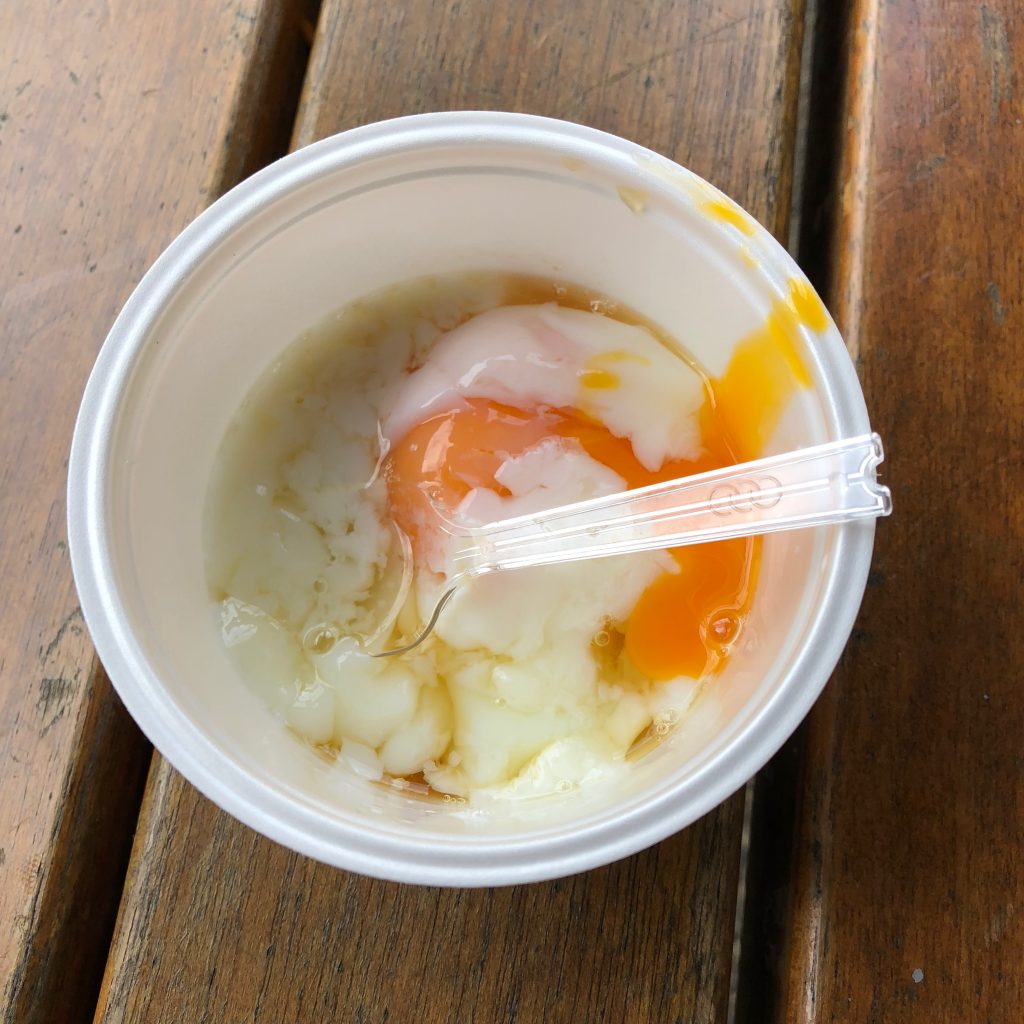
At the end of my first day in Kusatsu, I went back to my hotel, which was actually a ryokan. Ryokan are kind of like extremely fancy bed & breakfasts that are found across Japan. They are especially common around traditional areas and onsen towns. Many of these ryokan are family-owned and have been in the same hands for hundreds of years. Your typical ryokan will have you sleep in a small, traditional Japanese room (i.e. sleeping on a futon on tatami rather than a western bed), where you will also be served meals. These meals are generally included in the cost of your stay and will often be absolutely extravagant.
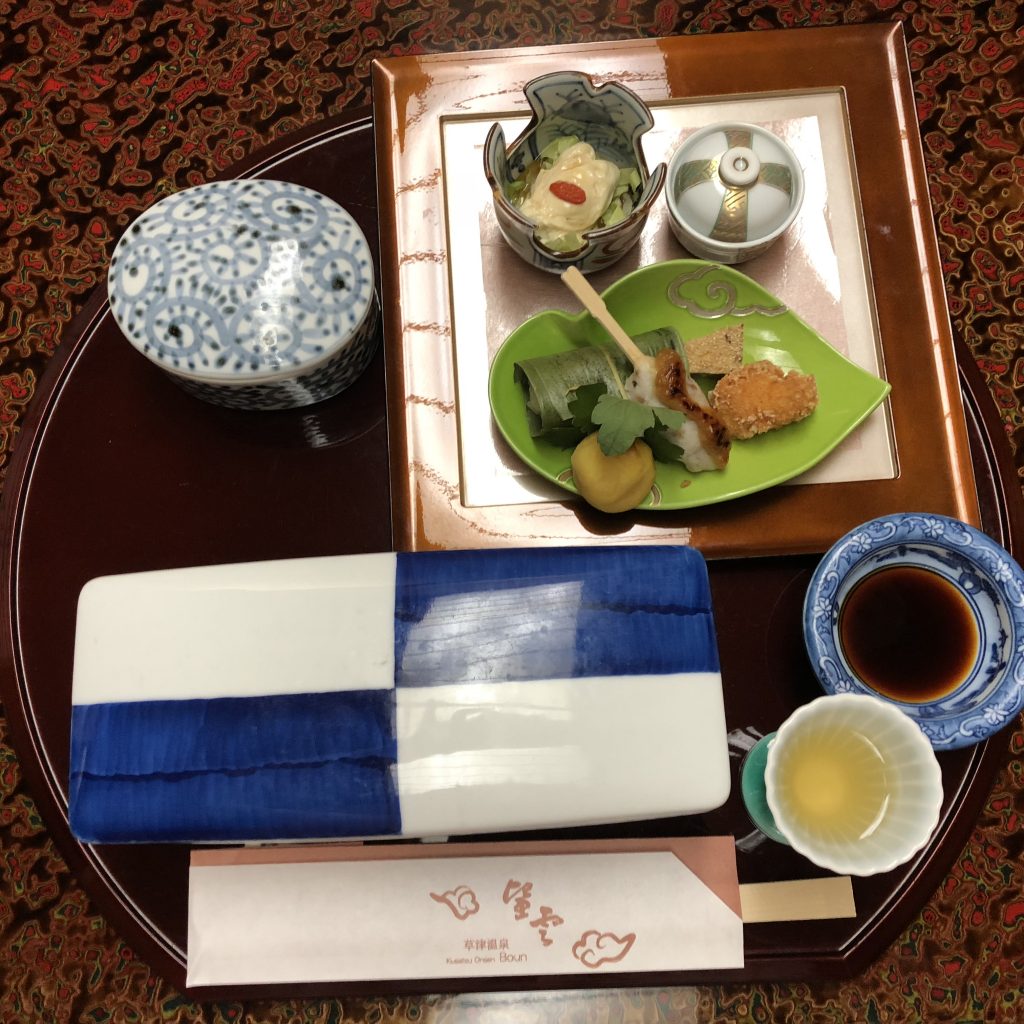
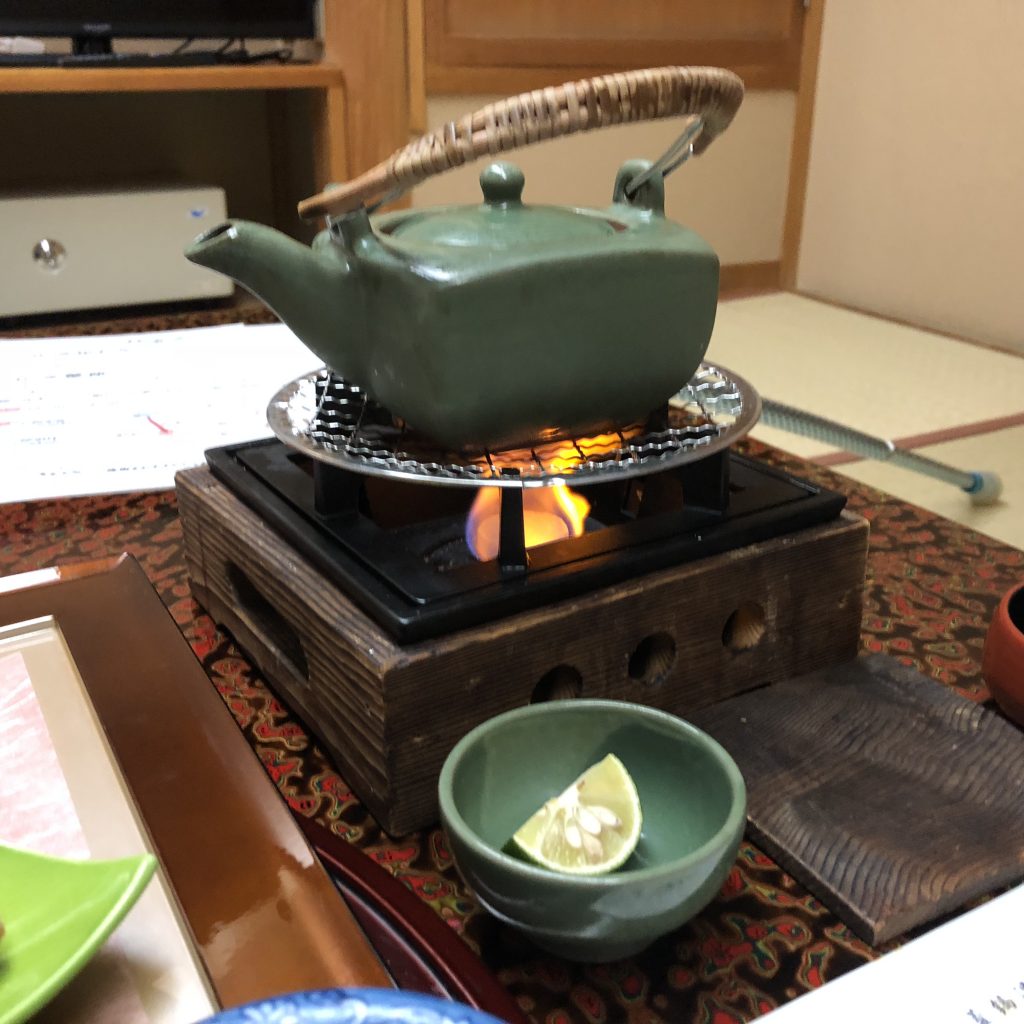
Kaiseki meals are very traditional in Japan and can be found in ryokan and fancy restaurants all over the country. (Especially Kyoto, a deeply historical town.) The meals include dozens of small dishes brought out to you in courses over the course of your evening. If you indulge in a kaiseki meal, expect to be eating it for at least a couple hours. (Note: this is one reason why you might be expected to check in at your ryokan relatively early in the evening.) If you’re foreign — or frankly, even if you’re Japanese — there’s a strong likelihood that a lot of what you will be served will be a complete mystery to you. We are not talking typical Japanese cuisine here, but
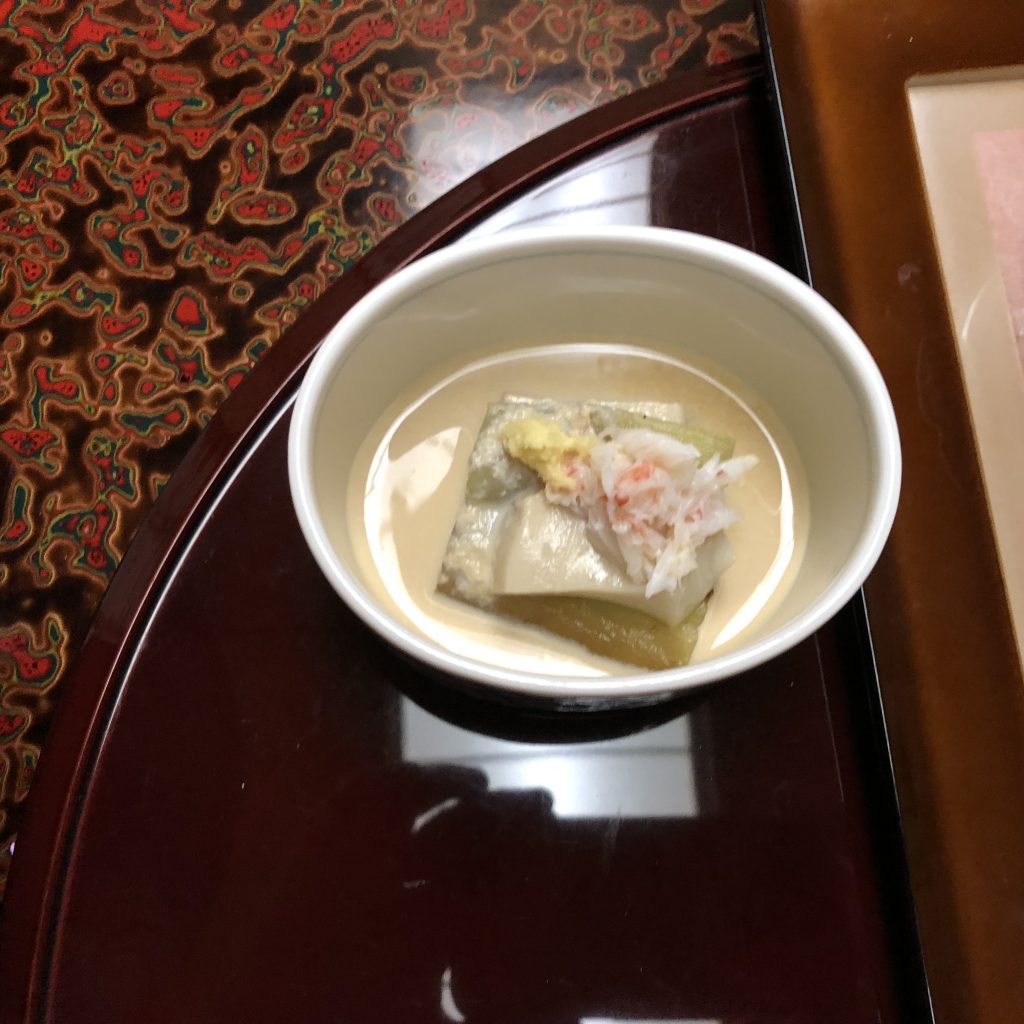
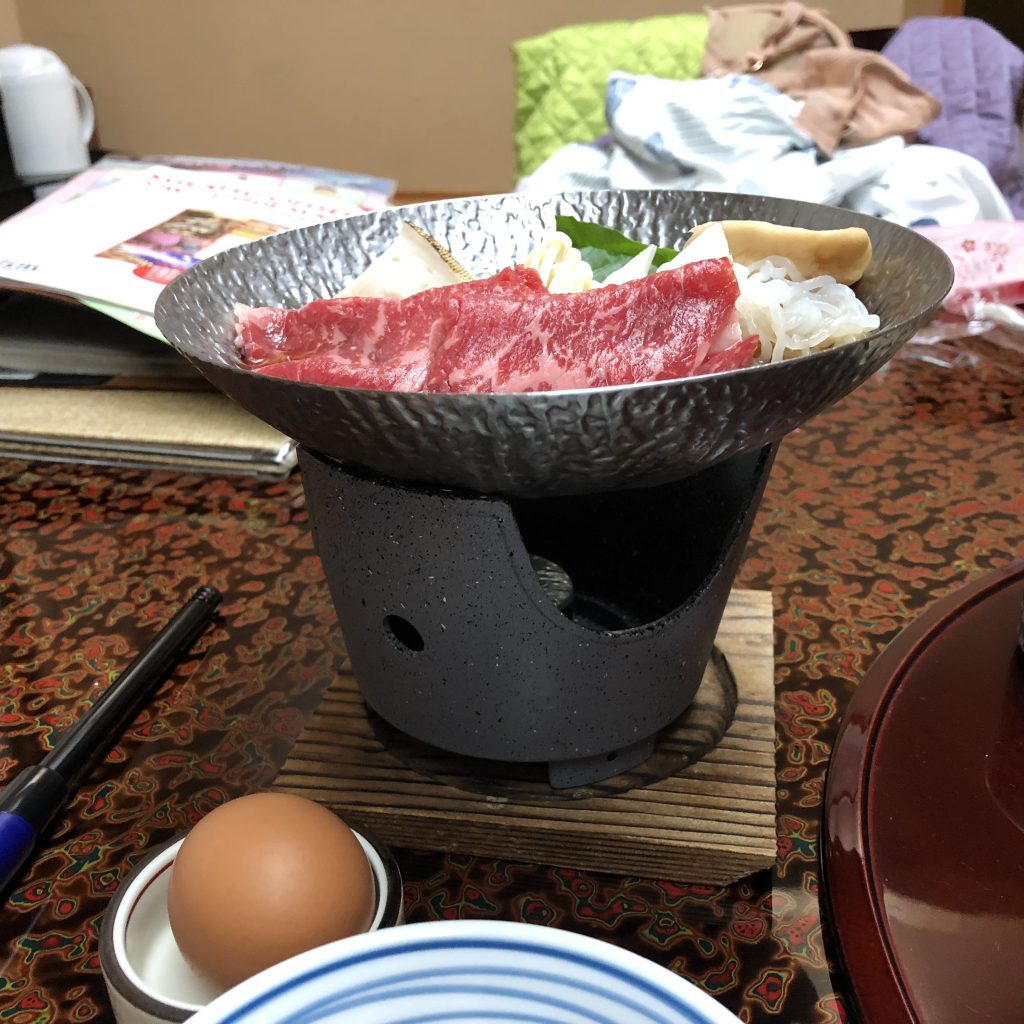
Most ryokan will have dinner and breakfast included, and will ask you about your dietary needs when you make your reservation. At the ryokan I stayed at in Kusatsu Onsen, breakfast was served in a separate dining room, but was no less extravagant.
After you’ve eaten so much food that you feel like you’re going to pass out, take a little rest in your traditional room, then head out to take, what else, yet another bath. Most ryokan in onsen towns also
Or, you could go the exact opposite route, like I did, and take a visit to Sai no Kawara on the far side of Kusatsu Onsen. This is how I spent my second day there, and I believe that just this park is worth the trip up there. Sai no Kawara is a beautiful little park that’s full of hot springs releasing steam up into the air. The scenery is nothing short of gorgeous.
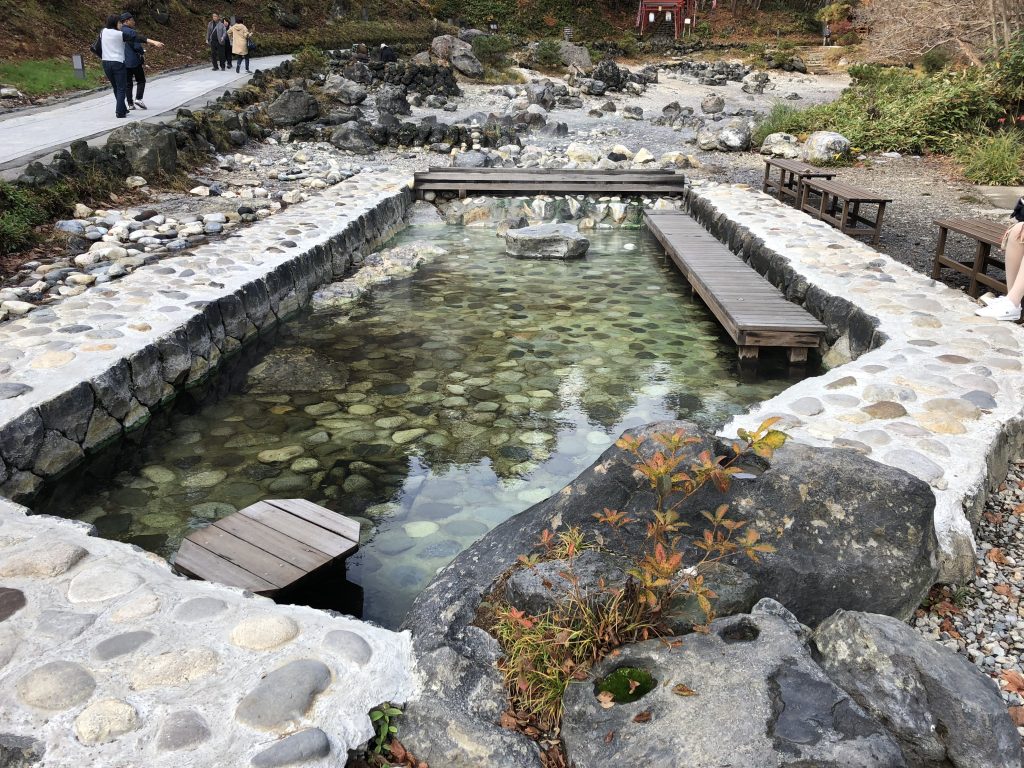
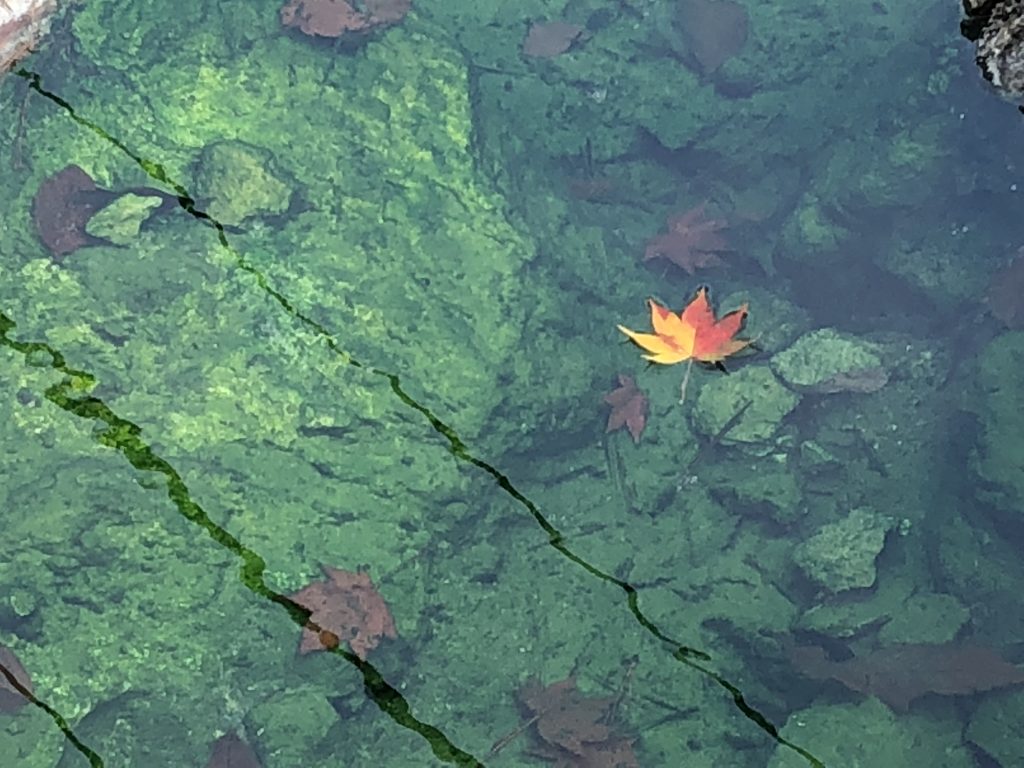
You’ll also find plenty to explore while you’re there. You can see the devil’s kettle, a hot spring that bubbles up like a kettle and mysteriously goes quiet as you approach, or maybe take a little trip up to the tiny Shinto shrine up on the hill. You can sit along the rocks and put your feet in a large communal foot bath under the watchful eye of Jizo. Or, you could climb all the way to the top and visit Kusatsu Onsen’s largest and most beautiful
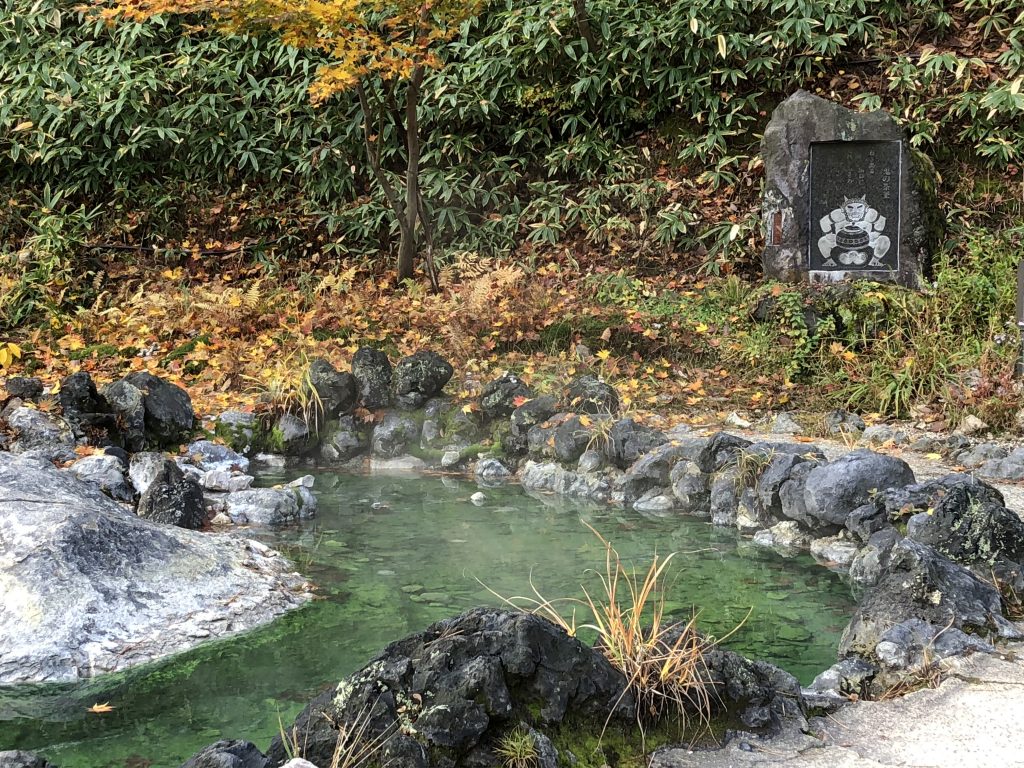
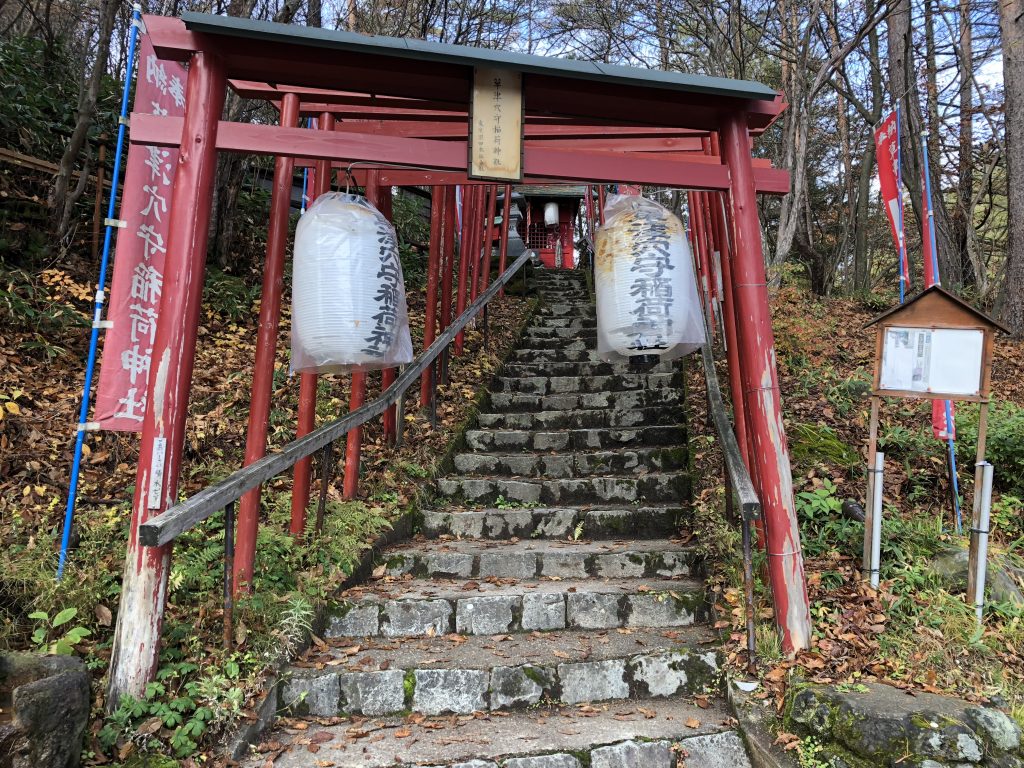
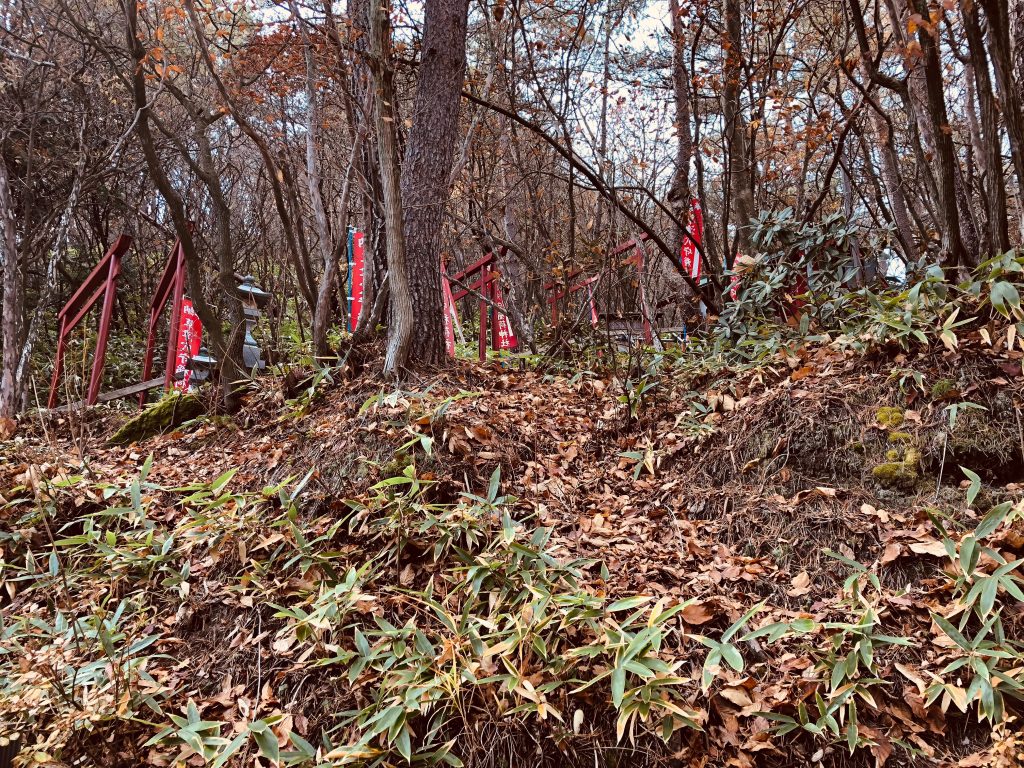
Most onsen are indoors in a lovely bathhouse that pipes hot spring water into a wooden or rock-lined bath for you to soak in. However, rotenburo are something a little different and are not to be missed. These are outdoor baths that allow you to enjoy the famous mineral water of Kusatsu Onsen while surrounded with the beauty of nature. In my opinion, these are best enjoyed while it’s pretty chilly outside. The combination of cold air and hot water is one of the most relaxing things on earth, and a little bite in the air will keep you from getting too dizzy in the hot water.
Like indoor onsen, the rotenburo is split into two sides, one for men and one for women, and like most onsen, the sides are switched on a set schedule so you can try out both sides. You can hear the people on both sides, and paired with the sounds of nature and that of the rest of the park’s inhabitants, it can make for a louder experience. Still, there’s something really soothing about relaxing against the rotenburo’s rocks and maybe chatting with a friend. The water’s high mineral content feels almost fizzy against your skin, and you can see why doctors have praised its effects for decades.
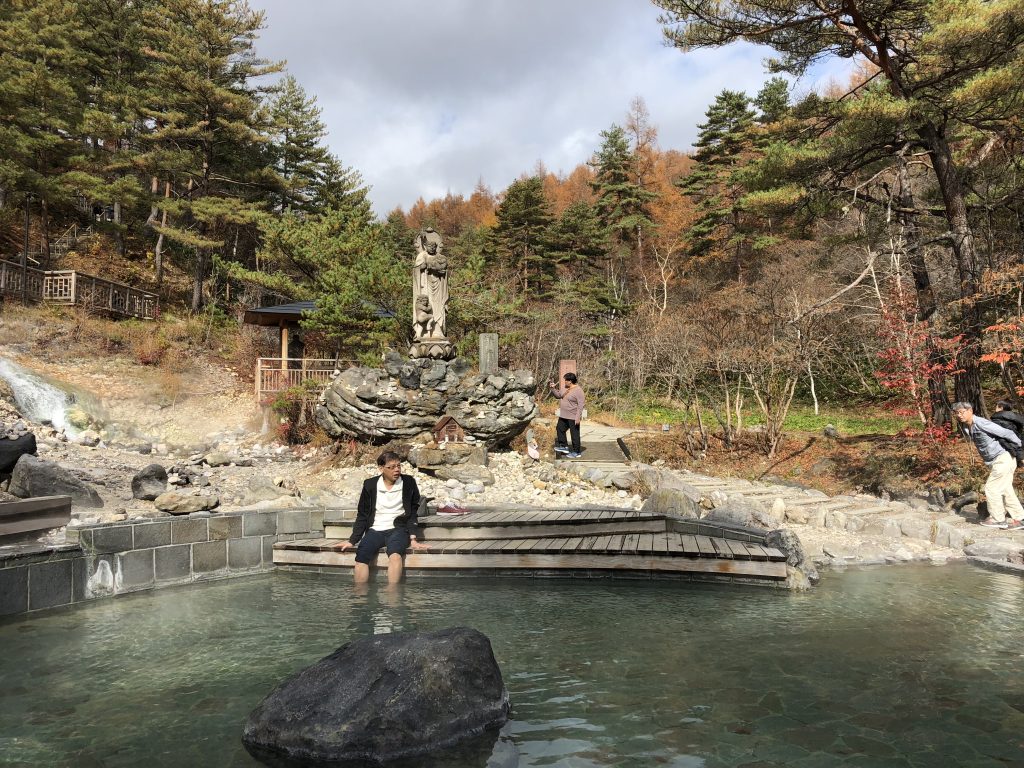
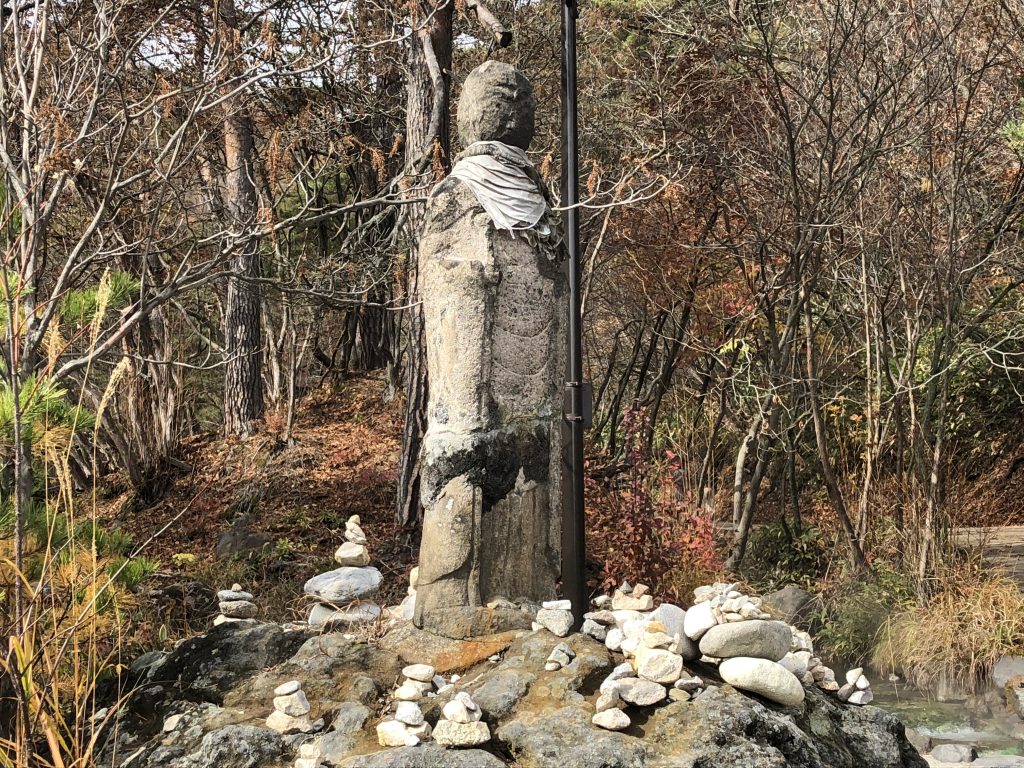
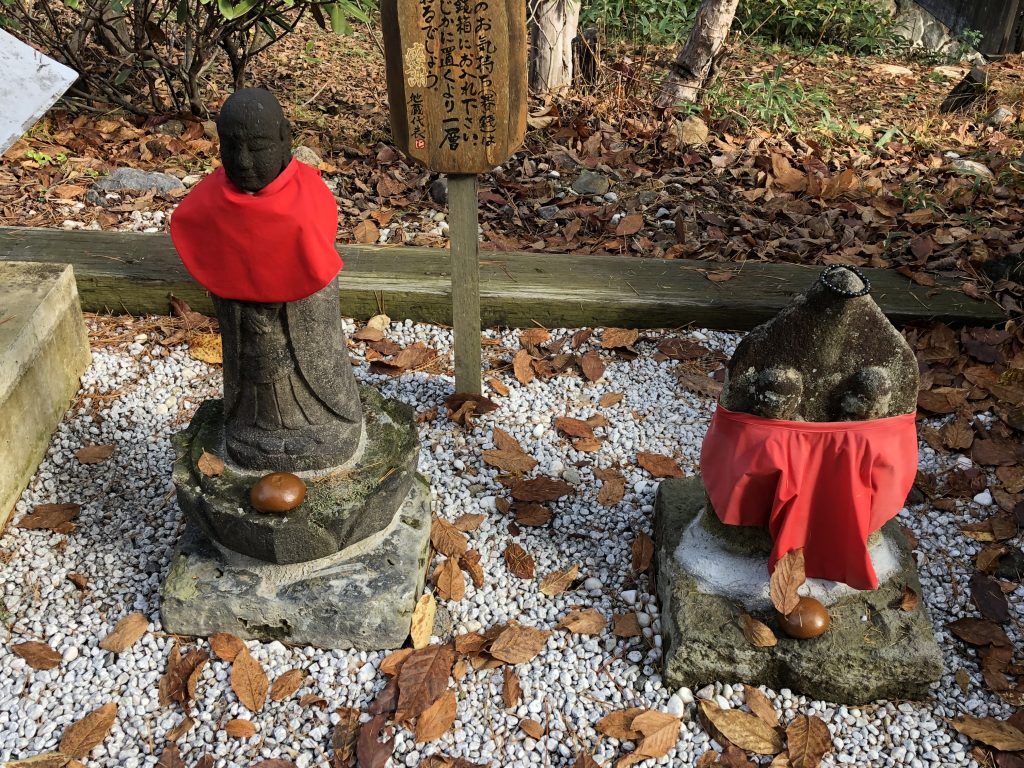
Now, I have several chronic illnesses. I’ve heard about all number of quack therapies over the course of my life. People like to say that the water at Kusatsu can heal any ailment except heartbreak. Can bathing in an onsen’s mineral waters actually cure all of life’s ills? I’m leaning towards probably not — I’ve even seen people saying it can cure cancer, and that’s gonna be a big no from me. That said, I felt really good after bathing at Kusatsu Onsen. It gives you all of the benefits of taking a nice, long soak at home, but with hotter water and clear air. The entire town is devoted to relaxation and self-care, and that atmosphere really gets to you. And hey? What do I know? Maybe some of those minerals really helped out my skin.
If you want to try out the healing waters of Kusatsu Onsen, it is a bit of a hike. You’ll need to take a train out of Tokyo and then a connecting bus to Kusatsu Onsen station. If you’re staying at a ryokan, they will often be willing to pick you up here. If you’re only staying for the day (not recommended if you’re coming all the way from Tokyo) or you’re staying at a normal hotel/airbnb, you’re probably better off walking or taking the local bus. It’s not a very large town, and getting around it is pretty easy, but getting out there? Yeah, I’d set aside at least three hours for the trek from Tokyo.
There’s not a lot to do, exactly, in Kusatsu Onsen, but there’s something to be said for going out to a spa town to give yourself a break. If you’re going to be in Japan for quite a while, I wholeheartedly recommend taking some time to visit an onsen, whether in a fancy onsen town or just in the city. It’ll let you decompress after all of your frantic travels, and the hot water will soothe away your stress.

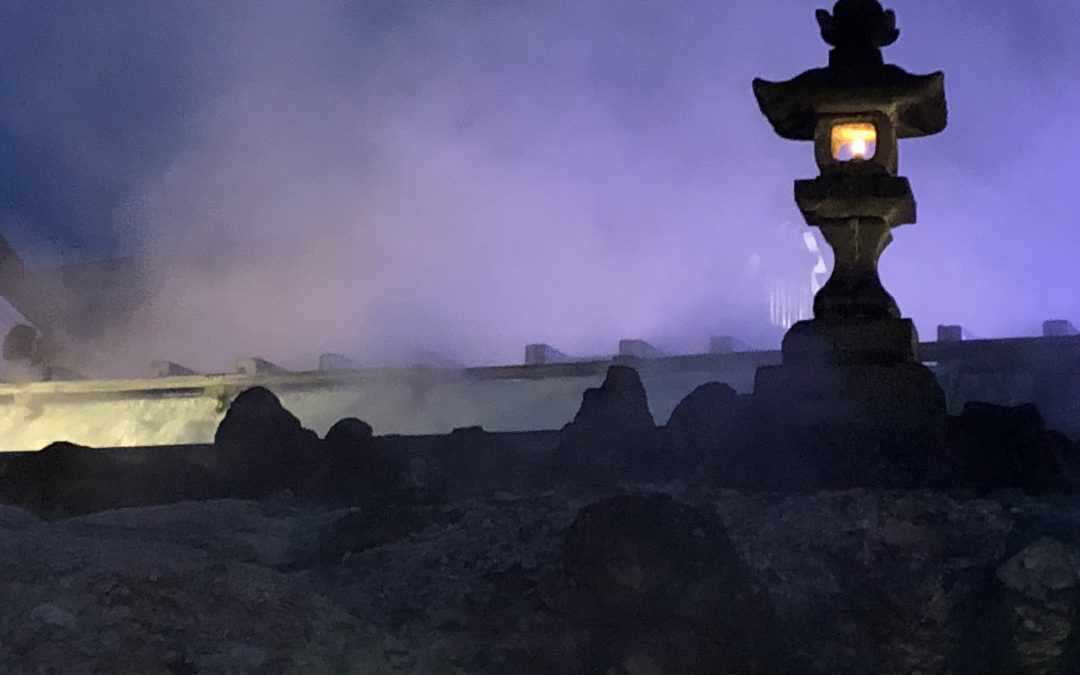
Recent Comments